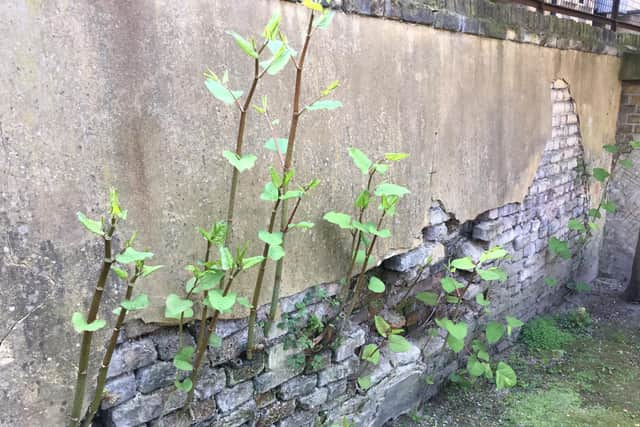Hastings one of the worst affected areas for Japanese knotweed
and live on Freeview channel 276
The findings reveal this year’s Japanese knotweed hotspots across the UK.
The data has been collated by invasive plant specialist Environet, which has produced a heatmap, which shows the number of verified knotweed sightings within a 4km (2.5-mile) radius.
Advertisement
Hide AdAdvertisement
Hide AdAccording to the data, the East Sussex hotspots for 2023 are Hastings, with 50 sightings, Brighton, with 48, Hove (39), Crowborough, 34, and Uckfield, with 31 verified sightings.


Environet said its heatmap covers almost 58,000 known infestations of Japanese knotweed across the UK.
Japanese knotweed usually emerges in March or April and grows rapidly to reach up to 2.5 metres in height by mid-summer.
It is identifiable by its hard, bamboo-like canes and distinctive shield-shaped bright green leaves which grow in a zigzag pattern along the stem.
Advertisement
Hide AdAdvertisement
Hide AdMature plants flower in August, becoming covered in clusters of delicate tasselled creamy-white flowers.
Knotweed does not produce viable seeds as all the plants in the UK are female, so it is usually spread accidentally through the movement of soil or gardening waste, or via rivers and streams when pieces of rhizome break off and take hold in new locations.
Homeowners are one of the groups most at risk from knotweed, not only from potential damage to their property, outbuildings and gardens, which can be costly to repair, but also from legal risks arising from encroachment or when properties are sold.
Nic Seal, founder of Environet, said: “Vigilance is the best way to protect your property from the risks posed by Japanese knotweed. Make sure you know what knotweed looks like and how it differs from other common garden weeds like ivy and bindweed, so you can keep an eye out for it in your garden and neighbourhood.
Advertisement
Hide AdAdvertisement
Hide Ad“Knotweed is easily identifiable during summer, but as we head through the autumn and into winter, the above-ground growth dies back and it becomes much harder to spot. It’s also easier to conceal, so anyone viewing a property to buy should be extra careful.
“There are lots of horror stories out there but the with professional help, knotweed can be successfully treated and a property’s value can be largely restored.”
The heatmap can be found here.